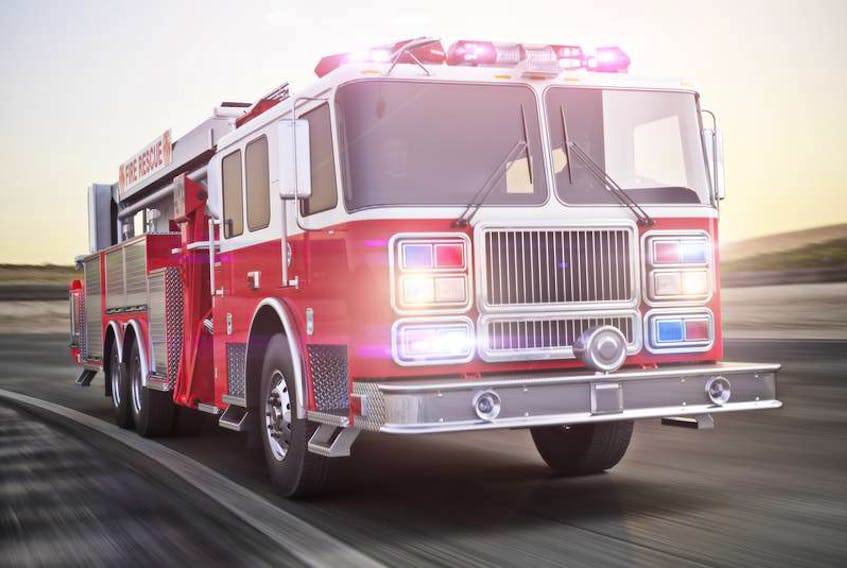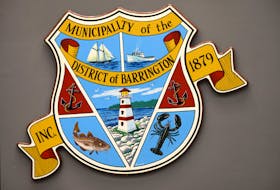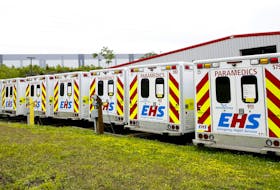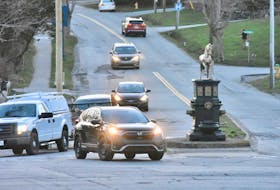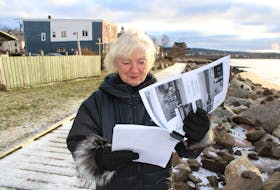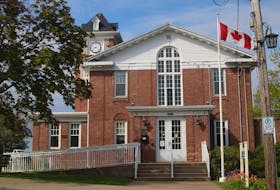PICTOU, N.S. — There are 17 rural fire departments in the Municipality of Pictou County. All depend on volunteers, all require training and all require regular upgrades to equipment. But not all are funded equally.
The topic is a sore point for some county councillors who believe some departments in their ridings are being shortchanged because of the current funding structure. The issue was debated at length at a recent council meeting.
“There’s definitely an issue there we need to somehow address,” said chief administrative officer Brian Cullen, pointing to the fact that 12 of the 17 departments make in excess of $100,000 from the fire levy while the remaining make less than $72,000.
The way it works now is that fire departments have the right to put an area levy on the residents within their area to fund their departments. Some charge as high as 20 cents on $100 of assessment. The municipality also covers the cost of insurance for the departments,” Cullen said.
Also, departments are eligible for grants. Most receive $4,000 but those in the areas with lower property assessment and less of a population can receive as much as $16,000 based on a funding model proposed by a previous council.
The problem is that even with that option, there is a disparity in what certain districts receive, says Coun. Andy Thompson.
Thompson is councillor for District 11. It’s a more sparsely populated portion of the county that stretches from East River Saint Mary’s all the way to Plymouth, covering approximately 20 per cent of the land area of the county. Within that area, there are several underfunded departments.
“The present way it’s funded is not working for these fire departments over the long term,” Thompson said. “Every year we don’t address it, the gap gets wider because the needs increase.”
The East River St. Mary’s Fire Department has the lowest income from the fire levy with just $7,087.31 raised during the 2018/2019 fiscal year. It does receive some funding from the District of Saint Mary’s, as well, however as it serves a portion of that county as well, but it still falls well below the funding of other districts. Blue Mountain Fire Department is the second lowest with only $28,207.99 received from the fire levy.
This is in stark contrast to other fire departments. For instance, the Scotsburn Fire Department raised $174,955.78 from its fire levy. Little Harbour Fire Department raised $154,401.09 and Caribou Fire District raised $153,040.82.
Thompson said it’s clear that areas along the coast with higher property values and those in more suburban areas have a clear advantage.
“When I go to Blue Mountain, it’s all woods. It’s resources land which is nontaxable. They can only generate fire levy from homes and buildings,” he said.
Even with the highest levy they are allowed, they’ll bring in less than $50,000 a year to operate.
“They still have to provide turnout gear. The have to make sure the trucks are inspected. All the fire equipment is up to standards which is changing all the time,” he said. “To operate as a fire department you can’t send out a firefighter that's in a turnout gear that’s past its due date.”
Cullen said he has researched the topic and it appears most municipalities in the province use a similar funding model to the one used in Pictou County, but he said they are investigating what can be done to deal with the shortfall and expects council will receive a recommendation from the fire liason committee in the near future.
Thompson hopes a solution is found sooner than later.
“Every year we don’t address it, the gap gets wider because the needs increase.”
TREADING WATER
The Barney’s River Fire Department is richest of the five poorest fire departments in the county with $71,520.27 brought in during the 2018/2019 fiscal year from the fire levy. While they’re better off than some, fire chief Joe MacDonald said it can be a struggle to keep up with the costs of turnout gear and breathing apparatus for their members as well as the cost of maintaining and replacing trucks.
Right now they’re newest truck is a 2008. They’re looking at replacing one of their older trucks but the costs are listed at between $285,000 to $345,000.
With departments relying on each other for mutual aid, MacDonald said it makes it all the more important for everyone to be properly equipped.
“If we get a mutual aid call to Thorburn or wherever we’re the weakest link in the chain if we’re not funded,” MacDonald said.
As they currently sit, he said they’re treading water, but he wonders how those making less are able to keep going.
“I don’t know how they do it.”
Fire department levy income for 2018/2019 fiscal year
Abercrombie Fire Department – $107,211.26
Alma Fire Department – $145,471.82
Barney’s River Fire Department – $71,520.27
Blue Mountain Fire Department – $28,207.99
Caribou District Fire Department – $153,040.82
East River Valley Fire Department – $54,677.01
East River St. Mary’s Fire Department – $7,087.31
Eureka Fire Department – $123,662.74
Linacy Fire Department – $108,071.33
Little Harbour Fire Department – $156,401.09
Merigomish Fire Department – $113,723.34
Pictou Landing Fire Department – $47,817.24
Plymouth Fire Department – $116,038.69
River John Fire Department – $142,900.74
Scotsburn Fire Department – $173,955.78
Thorburn Fire Department - $140,456.25
West River Fire Department – $163,344.59

